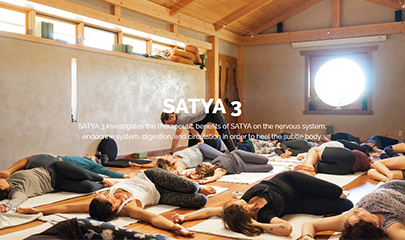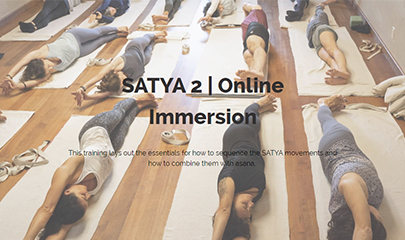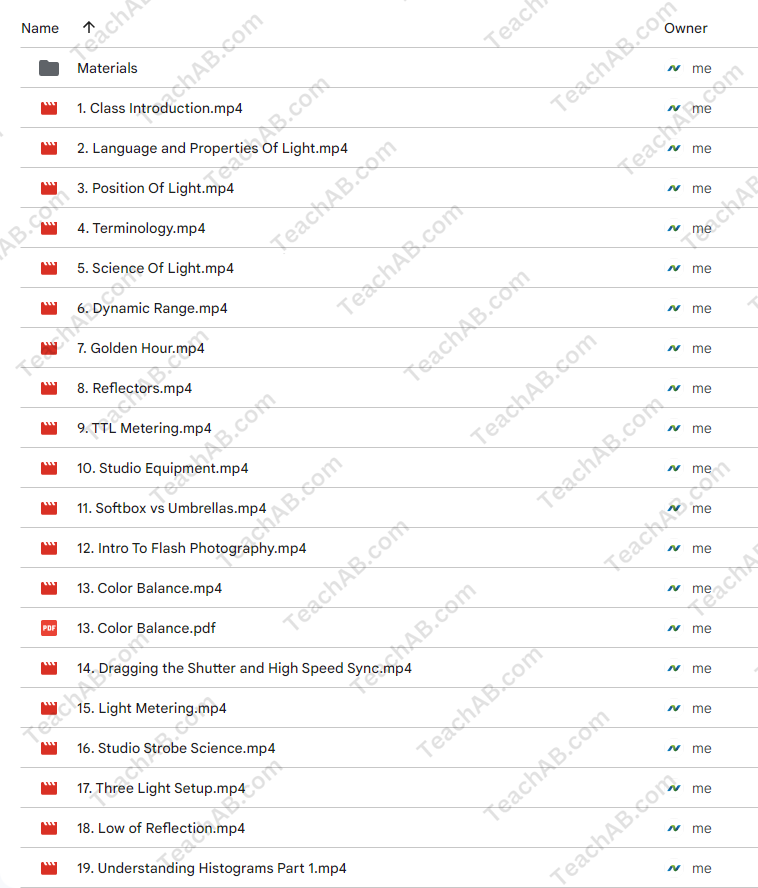-
×
 ALL-ROUND FOOTSTEPS SOUND FX By Ocular Sounds
1 × $8,00
ALL-ROUND FOOTSTEPS SOUND FX By Ocular Sounds
1 × $8,00 -
×
 Secrets Of Subtle Sales Mastery Deluxe By Paul Ross
1 × $23,00
Secrets Of Subtle Sales Mastery Deluxe By Paul Ross
1 × $23,00 -
×
 How to Build a Happy Cult Circle of 2 to 7 Girlfriends in 3 months by Jesse Charger
1 × $5,00
How to Build a Happy Cult Circle of 2 to 7 Girlfriends in 3 months by Jesse Charger
1 × $5,00 -
×
 Fractal Markets FX (SMC)
1 × $5,00
Fractal Markets FX (SMC)
1 × $5,00 -
×
 The Meal Prep and Meal Planner Bundle
1 × $5,00
The Meal Prep and Meal Planner Bundle
1 × $5,00 -
×
 SEO Case Study Database 2023: Identify and validate opportunities in minutes By Adam Gent
1 × $21,00
SEO Case Study Database 2023: Identify and validate opportunities in minutes By Adam Gent
1 × $21,00 -
×
 Yoga Nidra - Yogic Sleep By Yoga International
1 × $39,00
Yoga Nidra - Yogic Sleep By Yoga International
1 × $39,00 -
×
 Messaging Program By Phoebe Kuhn - The Content Emporium
1 × $209,00
Messaging Program By Phoebe Kuhn - The Content Emporium
1 × $209,00 -
×
 SATYA 3 - Online Immersion - March 2023 By Tias Little
1 × $225,00
SATYA 3 - Online Immersion - March 2023 By Tias Little
1 × $225,00 -
×
 SATYA 2 - Online Immersion - January 2023 By Tias Little
1 × $225,00
SATYA 2 - Online Immersion - January 2023 By Tias Little
1 × $225,00 -
×
 Creating Helpful Content Workbook By Marie Haynes
1 × $31,00
Creating Helpful Content Workbook By Marie Haynes
1 × $31,00 -
×
 Product Marketing Bootcamp By Melinda Chung
1 × $85,00
Product Marketing Bootcamp By Melinda Chung
1 × $85,00 -
×
 Dave Mac's Push Ads Course By Dave Mac
1 × $31,00
Dave Mac's Push Ads Course By Dave Mac
1 × $31,00 -
×
 Pilates Apparatus - The Complete Collection By Breathe Education
1 × $272,00
Pilates Apparatus - The Complete Collection By Breathe Education
1 × $272,00 -
×
![Full Body [P]Rehab By The Prehab Guys](https://kobozon.com/wp-content/uploads/2024/03/Full-Body-PRehab-By-The-Prehab-Guys.jpg) Full Body [P]Rehab By The Prehab Guys
1 × $155,00
Full Body [P]Rehab By The Prehab Guys
1 × $155,00 -
×
 Recruiting Professionals Live Dials By Todd Falcone
1 × $23,00
Recruiting Professionals Live Dials By Todd Falcone
1 × $23,00 -
×
 Family Systems Therapy with Kenneth Hardy
1 × $8,00
Family Systems Therapy with Kenneth Hardy
1 × $8,00 -
×
 Ultimate Guide to HARO Success By Easy Peasy Blogging
1 × $15,00
Ultimate Guide to HARO Success By Easy Peasy Blogging
1 × $15,00 -
×
 The Ultimate YouTube Ads Black Friday Bundle By Aleric Heck
1 × $23,00
The Ultimate YouTube Ads Black Friday Bundle By Aleric Heck
1 × $23,00 -
×
 Affiliate Marketing Course By Sara Finance
1 × $46,00
Affiliate Marketing Course By Sara Finance
1 × $46,00 -
×
 Shake Off The Bridge – Saam Gin Yiu Kiu By Chow Gar Tong Long
1 × $23,00
Shake Off The Bridge – Saam Gin Yiu Kiu By Chow Gar Tong Long
1 × $23,00 -
×
 LinkedIn Dominance By Steve Rosenbaum
1 × $69,00
LinkedIn Dominance By Steve Rosenbaum
1 × $69,00 -
×
 Foundr - All Courses Bundle
1 × $23,00
Foundr - All Courses Bundle
1 × $23,00 -
×
 AMN Practitioner – Level 1 Certification By David Fleming, John Campione And Dillon Walker
1 × $139,00
AMN Practitioner – Level 1 Certification By David Fleming, John Campione And Dillon Walker
1 × $139,00 -
×
 Training Session - Submissions: Going deeper by Renzo Gracie
1 × $6,00
Training Session - Submissions: Going deeper by Renzo Gracie
1 × $6,00 -
×
 The Complete Jiu Jitsu Collection By Roy Dean Academy
1 × $171,00
The Complete Jiu Jitsu Collection By Roy Dean Academy
1 × $171,00 -
×
 Shineon Treasury By Amanda
1 × $23,00
Shineon Treasury By Amanda
1 × $23,00 -
×
 Email Marketing Fundamentals By Jessica Best
1 × $39,00
Email Marketing Fundamentals By Jessica Best
1 × $39,00 -
×
 Fight Like An Old Man - Digital Download By Russell Stutely
1 × $78,00
Fight Like An Old Man - Digital Download By Russell Stutely
1 × $78,00 -
×
 Landscape Composition 2 - An eBook on Composition in Landscape Photography by Mads Peter Iversen
1 × $5,00
Landscape Composition 2 - An eBook on Composition in Landscape Photography by Mads Peter Iversen
1 × $5,00 -
×
 Speed Seduction Powerpack Gold Walkup By Ross Jeffries
1 × $23,00
Speed Seduction Powerpack Gold Walkup By Ross Jeffries
1 × $23,00
FAST CLASS: Understanding Light By Mark Wallace
$5,00
Understanding Light: A Review of Fast Class by Mark Wallace – Instant Download!
Let’s embark on a captivating adventure to uncover remarkable insights that spark your curiosity and elevate your understanding

FAST CLASS: Understanding Light By Mark Wallace
Overview

Understanding Light: A Review of Fast Class by Mark Wallace
In the world of photography, lighting is more than just an element; it is the very pulse that brings images to life. The class “Understanding Light,” taught by Mark Wallace, offers a journey through the intricate and often elusive concept of lighting. Available on platforms like CreativeLive, this course caters to both budding and intermediate photographers who wish to enhance their skills and artistic vision. With a rich tapestry of theoretical insights and practical applications, Wallace breaks down the complexities of light into digestible segments, deftly weaving principles like direction, quality, and the inverse square law into the fabric of everyday photography. Through engaging lessons peppered with detailed explanations, participants learn how to create personalized lighting styles and effectively manipulate light to craft stunning portraits.
The Essence of Light in Photography
The Importance of Understanding Light
Light is the artist’s brush, painting scenes and shaping emotions in every photograph. Every click of the shutter captures not just an image but a moment in time adorned with shadows and highlights, creating depth and dimension. This class invites photographers to delve deep into the various aspects of light, equipping them with the vocabulary and principles necessary to articulate and control their lighting.
Mark Wallace emphasizes the importance of understanding how light functions its direction, intensity, and quality because these elements determine the mood and atmosphere of any photograph. Imagine light as a storyteller, conveying emotions through contrast, form, and shape. For instance, a soft, diffused light might evoke a sense of calm and serenity, while harsh, directional light can infuse the image with drama and intensity. Wallace encourages participants to recognize light as an expressive medium, shaping the narrative they wish to convey through their photographs.
Key Concepts Covered in the Course
The course encompasses several critical concepts, allowing photographers to build a solid foundation in lighting techniques. Here are some of the core topics addressed:
- Direction of Light: Understanding how the angle of light influences shadows and highlights.
- Contrast: Mastering the balance between light and dark to create depth.
- Quality of Light: Exploring the differences between hard and soft light and when to utilize each.
- Shape and Form: Learning how light interacts with the three-dimensional aspects of a subject.
- Inverse Square Law: Demonstrating how distance affects the intensity and fall-off of light.
By dissecting these fundamental characteristics, participants cultivate a profound understanding of how to orchestrate light to elevate their photography. Each lesson is layered with practical examples and applications, ensuring that students can immediately apply what they learn in real-world scenarios.
Manipulating Light for Masterful Photography
Crafting Personalized Lighting Styles
Wallace guides students in discovering their unique lighting styles, encouraging experimentation with various light modifiers. This hands-on approach not only expands the photographer’s technical skill set but also nurtures their artistic expression. It’s akin to a chef curating their signature dish; every photographer must learn to blend their preferences and creativity with the elements of light.
Some vital tools explored in the course include:
- Softboxes: Providing a diffused quality of light suitable for portraits.
- Umbrellas: Offering broader lighting coverage while maintaining control.
- Reflectors: Manipulating light to fill in shadows and enhance details.
Students learn how different modifiers influence light quality, allowing them to make informed choices when setting up their shots. This exploration is crucial understanding the nuances between soft and hard light can mean the difference between a flat photo and one that resonates with life.
Controlling Shadows and Highlights
One critical aspect of lighting that Wallace addresses is the management of shadows. Shadows can be both a curse and a blessing; they can either detract from a subject or serve to enhance its dimensionality. Mastering the interaction between light and shadow is vital for creating compelling imagery that draws the viewer in.
Wallace presents techniques for controlling shadows within a composition. For instance, utilizing a fill light can soften harsh shadows, while strategic placement of lights helps to highlight the subject. By learning to manipulate shadows effectively, photographers can create depth and draw focus to key elements within their images. This understanding transforms a simple photograph into an immersive visual experience, evoking feelings and engaging the audience.
The Inverse Square Law Revisited
The inverse square law is a principle that often confuses amateur photographers but is crucial for understanding how light behaves. In simple terms, this law states that the intensity of light diminishes as the distance from the source increases. Mark Wallace illustrates this concept with practical demonstrations, showing how varying distances affect the overall exposure and feel of a photograph. For photographers, mastering this principle can lead to more consistent results in diverse shooting conditions.
To sum up this section, the ability to manipulate light is a skill set that can elevate photography from mere snapshots to artistic expressions. Understanding the interplay of light and shadow, combined with knowledge of light modifiers, empowers photographers to create their own captivating visual narratives.
Building a Toolbox of Light Modifiers
Exploring Various Light Modifiers
A robust lighting setup is incomplete without an understanding of various light modifiers, which are essential for achieving the desired outcomes in different photographic settings. Wallace emphasizes that every photographer should cultivate a diverse “light modifier toolbox” to adapt to various scenarios they may encounter while shooting.
Among the key modifiers explored in this class are:
- Softboxes: Ideal for creating soft, even lighting, particularly when photographing portraits.
- Umbrellas: Versatile tools that can either bounce or diffuse light depending on how they are set up.
- Diffusers: Useful for softening harsh sunlight or other direct light sources, ensuring a pleasing quality.
- Grids: Allowing photographers to control the direction and spread of light for focused highlights.
With these tools at their disposal, photographers can experiment with light quality and direction, continually refining their craft. This assortment of modifiers is not just a collection of equipment but a metaphor for the artistic tools of an artist a painter chooses brushes and colors carefully, and a photographer must do the same with light modifiers.
Practical Application of Light Modifiers
Throughout the course, Wallace encourages participants to explore practical applications for each modifier. For instance, when utilizing a softbox, photographers learn how to position it in relation to their subject to achieve the most flattering results. The lessons are infused with hands-on demonstrations, allowing students to engage actively with the tools and see the immediate impact on their photographs.
The impact of light modifiers extends beyond mere technical performance they significantly influence the aesthetic quality of photographs. The choice between a softbox and an umbrella, for instance, can dramatically alter the mood of a portrait. By learning to manipulate these tools, photographers can tailor their lighting to enhance their vision, producing work that resonates with individual style and creativity.
Conclusion
Mark Wallace’s Understanding Light class represents a pivotal resource for photographers eager to deepen their knowledge and skills in lighting. By demystifying the principles of light and showcasing the importance of modifiers, Wallace provides a comprehensive toolkit for artists at the beginning of their photographic journeys.
Through this course, learners are not only introduced to the technical aspects of lighting but are also empowered to explore their artistic voice. As photographers grasp the relationship between light and creativity, they embark on a journey that transforms their visual storytelling. Whether capturing the soft glow of twilight or the dramatic shadows cast by midday sun, the insight gained from this course will undoubtedly illuminate the path to breathtaking photography.
Frequently Asked Questions:
Innovation in Business Models: We use a group purchase approach that enables users to split expenses and get discounted access to well-liked courses. Despite worries regarding distribution strategies from content creators, this strategy helps people with low incomes.
Legal Aspects to Take into Account: Our operations’ legality entails several intricate considerations. There are no explicit resale restrictions mentioned at the time of purchase, even though we do not have the course developers’ express consent to redistribute their content. This uncertainty gives us the chance to offer reasonably priced instructional materials.
Quality Control: We make certain that every course resource we buy is the exact same as what the authors themselves provide. It’s crucial to realize, nevertheless, that we are not authorized suppliers. Therefore, the following are not included in our offerings: – Live coaching sessions or calls with the course author.
– Entry to groups or portals that are only available to authors.
– Participation in closed forums.
– Straightforward email assistance from the writer or their group.
Our goal is to lower the barrier to education by providing these courses on our own, without the official channels’ premium services. We value your comprehension of our distinct methodology.
Be the first to review “FAST CLASS: Understanding Light By Mark Wallace” Cancel reply
You must be logged in to post a review.


















Reviews
There are no reviews yet.